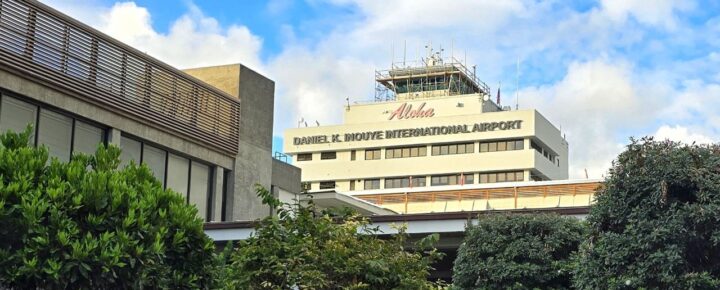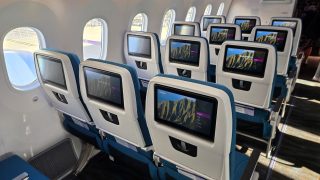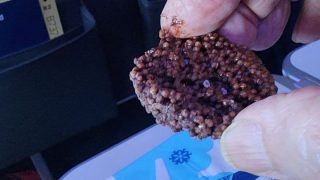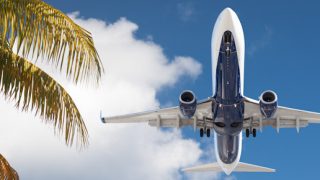Recent reports of bedbug infestations on flights have once again raised alarms for travelers worldwide, including those planning trips to Hawaii, who have asked us about them. Incidents involving bedbugs crawling on seats and even falling from overhead compartments have led to frustration over inadequate responses from airlines internationally.
For Hawaii travelers, the question arises: Is this a rare occurrence, or could bedbugs disrupt your journey to paradise—whether on a plane, at the airport, or in accommodations?
BOH visitor Tom commented, “We encountered them… at a highly rated Wyndham resort on Kauai. Resort did cooperate with us but insisted the bites were not caused by bedbugs even though the symptoms and signs were typical of the bugs.”
How common are bedbugs on flights?
Scientifically known as Cimex lectularius, bedbugs are more than just a nuisance. These resilient pests can survive for months without feeding and are resistant to many common insecticides. While their presence in hotels is widely documented, reports of airport and airplane infestations have also surfaced.
Honolulu Airport was notably impacted in the past, highlighting the challenges of maintaining pest-free travel environments, particularly in favorable climates like Hawaii.
As we reported in More Bedbugs? Hawaii Flight Attendants on Notice, airlines flying to Hawaii have dealt with complaints in the past, prompting increased cleaning protocols.
With their extensive travel schedules and frequent stays in hotels, flight attendants face unique risks of encountering and spreading bedbugs. A BOH reader and former flight attendant shared, “I can attest that airline crews have contracted bedbugs… A single encounter can lead to a domino effect of infestations.” This highlights the challenges airlines face in protecting both their crew and passengers from these persistent pests.
Are airlines doing enough to address this problem?
Recent bedbug incidents with Turkish Airlines, as reported by The New York Times and others, demonstrate that no system is foolproof. Passengers reported seeing bedbugs crawling on seats and even falling from overhead compartments on multiple international flights, raising concerns about the effectiveness of current measures.
Turkish Airlines is one of the world’s largest airlines by fleet size and international reach and claims to follow rigorous cleaning protocols. Your Beat of Hawaii editors will fly Turkish from Istanbul to Los Angeles later this year. Let’s say we are not too excited since we’ll be in the air with them for 14 hours.
The airline admitted that bedbugs are a “common problem” in public spaces like airplanes. Their response included working with manufacturers such as Airbus and Boeing to develop safer and more effective methods to eradicate pests.
Other carriers have faced similar challenges. British Airways and American Airlines have dealt with public backlash following bedbug incidents, while airlines serving Hawaii must contend with the unique demands of long-haul flights. Hawaii-bound routes, often spanning five to ten hours, amplify the risks of exposure. Despite promises of regular disinfection, the rapid turnover of aircraft limits the time available for thorough cleaning.
BOH reader Ian K. said, “Bedbugs on planes? Who knew? Bedbugs, unfortunately, travel everywhere you and your luggage go. In a hotel room, I don’t put my luggage on the bed or on the floor. When available, I use those little folding luggage stands or put my cases on the wood tables, dressers, etc. Spraying is a necessary evil. Unfortunately, airlines are going to have to rethink times when they spray the planes. They’ll need plenty of time to spray, let the insecticide dry, and the fumes dissipate. But that doesn’t mean that plane will be ready for another flight the next hour. People can’t be breathing in those noxious fumes.”
Why Hawaii travelers should stay vigilant.
Hawaii’s popularity as a destination brings significant challenges. The high volume of travelers passing through Honolulu International Airport increases the likelihood of bedbugs hitching rides on luggage or personal belongings. Once in Hawaii, the warm, humid climate creates ideal conditions for these pests to thrive, extending potential problems to hotels and vacation rentals.
As highlighted in the comments and our 2023 articles, bedbug issues have gone beyond flights. At Honolulu Airport, several gates in Terminal 2, including areas serving Southwest Airlines, were temporarily closed after bedbugs were discovered in seating and lounge spaces.
This incident raised serious concerns about cleaning protocols in public areas frequented by Hawaii-bound travelers. Even high-end resorts in Hawaii are not immune to bedbug issues. Travelers should inspect airplane seats, blankets, and pillows before settling in, store bags off the floor in accommodations, and take steps to ensure their belongings remain pest-free throughout their journey.
The decline of pillows and blankets on flights is tied to concerns about bedbugs.
These soft materials provide a hiding place for bedbugs, which can easily travel between flights if items are not thoroughly cleaned. Many airlines have eliminated these amenities or adopted stricter hygiene protocols to address this.
When pillows and blankets are provided, they are often sealed in plastic bags to ensure they are sanitized and unused before reaching passengers. While cost-cutting also reduces such offerings, a heightened awareness of bedbugs and other cleanliness concerns has made this shift practical for both airlines and travelers.
What to do if you encounter bedbugs on a flight.
If you spot bedbugs during your flight, notify the cabin crew immediately. Airlines are obligated to address passenger safety concerns, but responses vary. In the Turkish Airlines incidents, passengers reported receiving inadequate compensation, including minimal frequent flyer miles or small discounts, despite enduring significant discomfort.
Documenting your experience with photos and reporting the issue directly to the airline’s customer service is crucial. Contacting a regulatory body such as the FAA may lead to faster resolution for persistent issues.
Lessons from past incidents.
Bedbug infestations in aviation are not a new challenge. British Airways faced widespread criticism in 2018 when the cabin crew refused to fly because of bedbugs on the plane pre-departure. The airline responded with a deep-cleaning program to address concerns.
United Airlines also took preventive measures, advising flight attendants to replace fabric luggage with hard-shell alternatives and use sealed bags for clothing during layovers. These steps were designed to minimize the risk of carrying bedbugs between flights and accommodations.
Final thoughts for Hawaii travelers.
Although the spotlight is currently on Turkish Airlines, bedbugs on flights are a broader issue that can affect any traveler, including those heading to Hawaii. While widespread infestations on Hawaii-bound airlines have not been reported, travelers should remain vigilant. Taking precautions, such as inspecting surroundings and safeguarding luggage, can help ensure a smooth journey.
For more insights and tips, revisit our article More Bedbugs? Hawaii Flight Attendants on Notice.
Have you encountered bedbugs on a flight to or from Hawaii? Share your story in the comments below.
Get Breaking Hawaii Travel News







Good article about bed bugs being transferred from airplanes.
Can you research how long it takes for checked bags to get to baggage claim? I have incidents with Southwest and Hawaiian, waiting time (in actual baggage claim) at time can be up to 30 minutes or more.
I was on an Alaska flight where the attendant said (prior to deboarding) that bags will be in baggage claim in 20 minutes from the time the plane door opens. Which was amazing my bag was on the carousel by the time I reached baggage claim.
There is absolutely No way to know exactly how long it will take for bags to get to baggage claim. There are so many possible factors that can effect the process like a lot of flights showing up at the same time such that there are not enough ground crew to get them loaded onto the conveyors. My bags are always tagged priority on American and even at smaller airports I have waited up to 30 minutes before they show up at baggage claim. At LAX I walked for almost 30 minutes to get to the Hawaiian baggage claim and the bags took another 20 minutes just to start showing up. Rare that any flight crew would make such an announcement let alone for it to be true.
What airlines are we talking about here?
I was on a flight from Hawaii back home to Las Vegas, on American Air and we had Bedbugs on our flight. The flight crew did nothing at all for us…..
37 trips to Hawaii over 35 years and I have Nevert encountered a single bedbug. I also traveled extensively for work and also never encountered them but then I don’t stay in fleabag hotels either. The massive influx of “people” into America that do not have the same hygiene principles in play also can be a huge source of the infestations. Just look at how so many communicable diseases have reappeared across America to understand just how bad the problem is.
Problems occur when hefty fees and other restrictions force passengers to bring luggage on board. Let’s get back to the old days of storing luggage where it belongs….below deck.
Brooke, I agree 100% but the cargo hold is essentially the same as the cabin. Fully air conditioned and pressurized using the same air and systems that serve the cabins. As an example, every airline takes live animals as cargo and they ride in the cargo bin just fine. So a checked bag with bed bugs in it will expose the entire aircraft.
But what can passengers do as a preventive measure besides hard suitcases? Can we spray our seats before sitting down? With what?
Bed bugs dropping out of an overhead bin for a five hour (or longer) flight would drive me insane. Literally. There aren’t enough Mai Tai’s to calm this momma down for that experience.
Last February, our evening return trip from Maui to Seattle was cancelled at the last minute. Hawaiian Airlines gave us a voucher for a nearby hotel they chose. Upon getting ready for bed, I spotted a bedbug on my pillow. I should have saved it, but I flushed it down the toilet. I notified the front desk and there were no more rooms available to move to. I stripped down the bed and didn’t find any more bugs. Hawaiian Air flew us home the next day and gave us
$500 each future travel credit. The bedbug room cost Hawaiian Air $400. Hopefully Hawaiian Air found cleaner accommodations for their customer in the future!
Once upon a time—‘70s-‘80s from my experience, airline attendants sprayed the cabin before descent into Hawaii. They probably stopped due to health risks, but Hawaii didn’t want any mainland critters infesting the islands.
Heat kills them at every stage of life. Surprised this wasn’t mentioned. Done routinely by exterminating companies in the islands. 140 degrees F for 24 hrs. Kills them in walls, everywhere. Guaranteed by the exterminators. Should work on the interior of an aircraft. Equipment can be rented in most big cities. No chemicals. They die at 130 degrees.
Maybe so on the heat but the turn around time for most aircraft is usually at most a few hours, not 24 so how’s that going to work?
Don, If the aircraft is infested with bed bugs, it will have to be taken off the line and sent to maintenance for “repair”. To get rid of them, every stage of their life cycle has to be addressed. This is the only known way to effectively do that. A quick spray of the cabin with vile bug killer is just a waste of time and may cause some passengers to become ill. They will be in the cabin the cargo bins and the entire cabin environmental system including the “Pacs”. A qualified tech from any reputable company that does this will lead them through it. It’s not trivial.
I have been traveling to Hawaii often over the past 50 years and have never seen any bed bugs. I am aware of the nightmare of dealing with them in an apartment on the mainland.
I dream of coming to Hawaii one day working hard to get there I pray that my Maui gets restored and may God bless all the people that lost precious possessions 🙏😇🤗